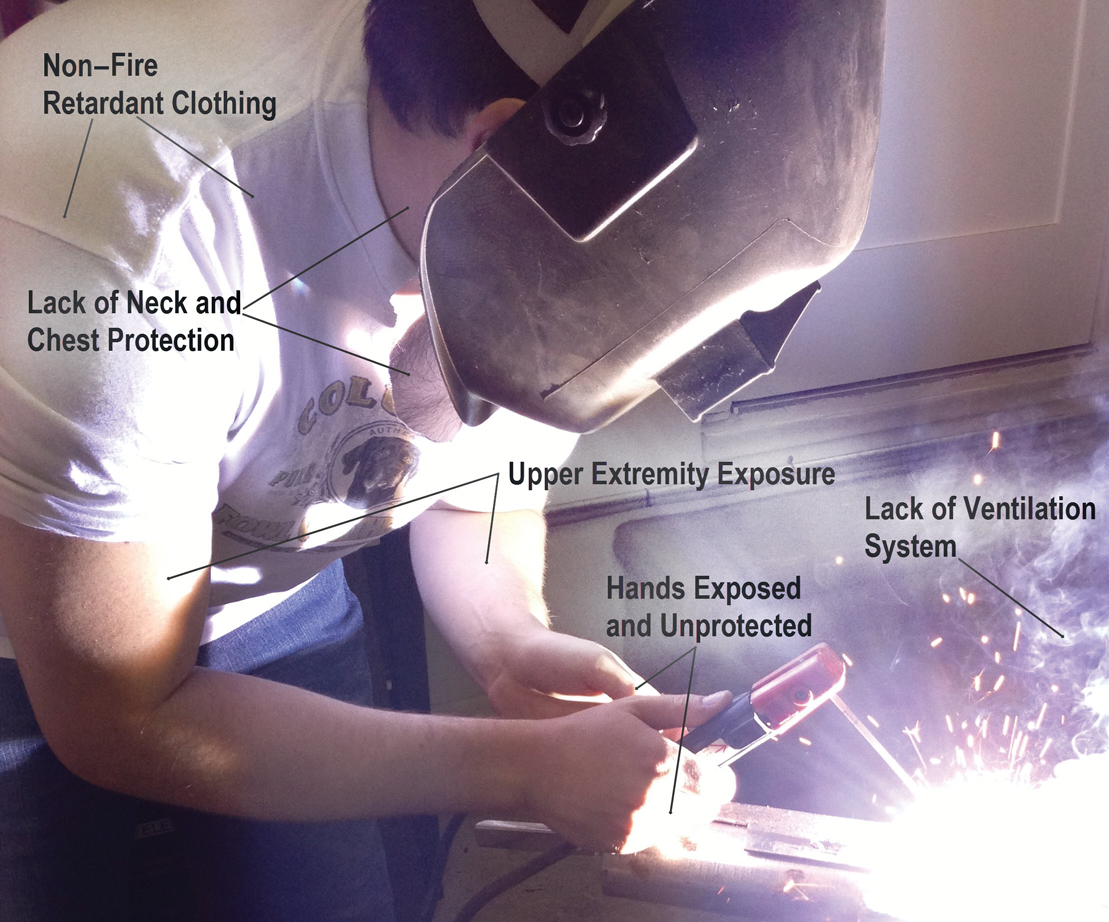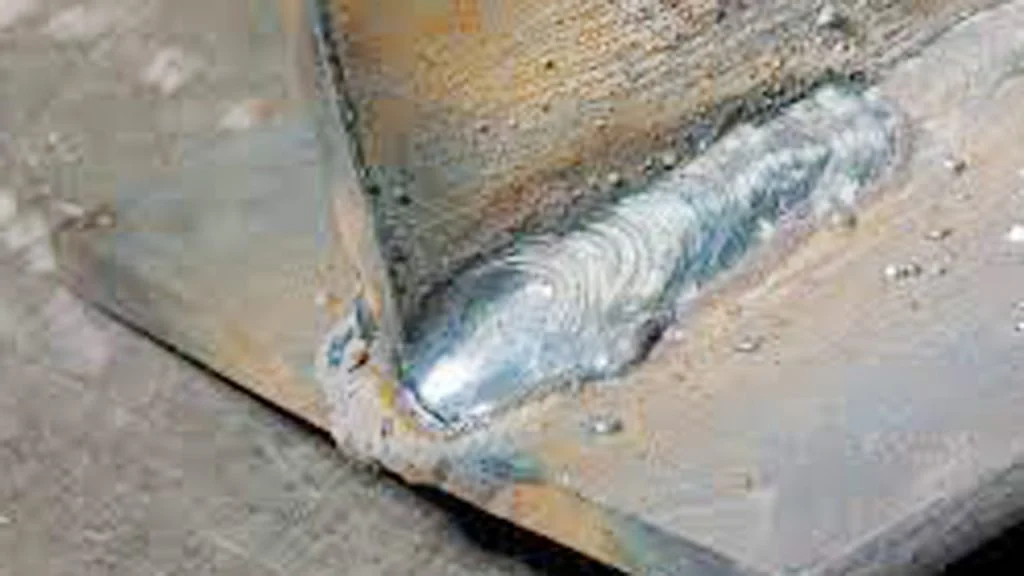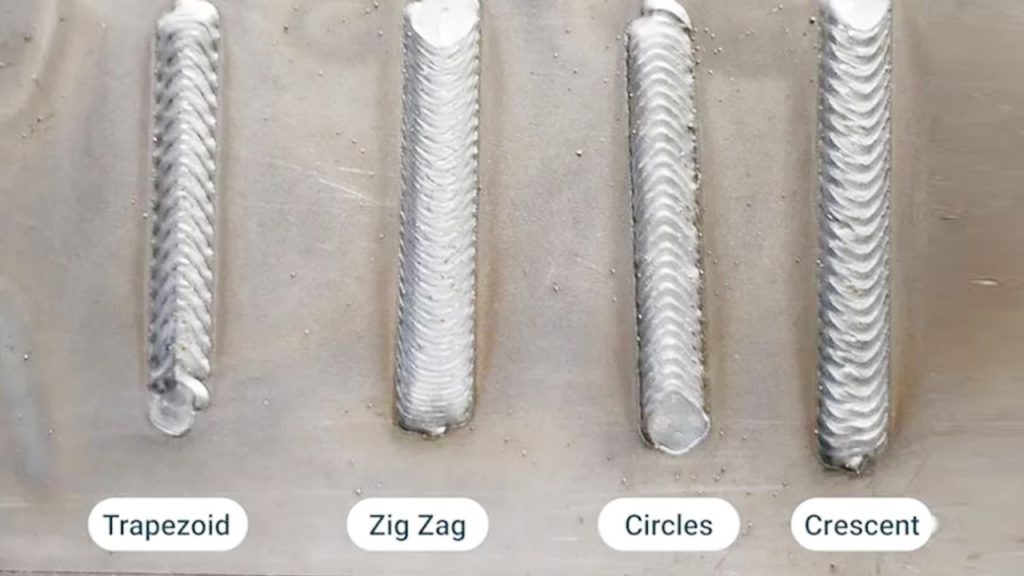Yes, welding can potentially cause skin cancer. The intense UV radiation from welding arcs can damage the skin.
Welding is a common and important trade. It involves joining metal pieces through intense heat. But, it also comes with risks. One of the lesser-known dangers is the potential for skin cancer. Welders often face exposure to harmful UV rays.
Over time, this can lead to serious skin issues. Understanding these risks is crucial for safety. Proper protection and awareness can help reduce the danger. This blog will explore the link between welding and skin cancer. We’ll look at how UV radiation affects the skin. We’ll also discuss ways to protect yourself while welding. Stay informed and stay safe.

Credit: www.semanticscholar.org
Welding And Skin Cancer Risks
Welding is a common job in many industries, but it comes with its own set of risks. One of the lesser-known dangers is the potential for skin cancer. But how does welding, a task that involves joining metals together, lead to such a serious health issue? Let’s dive into the details to better understand the risks involved.
Understanding Welding Radiation
When you weld, you are exposed to intense light and heat. This light includes ultraviolet (UV) radiation, which is the same type of radiation that comes from the sun. However, the UV radiation from welding can be much stronger and more concentrated.
Imagine standing under a magnifying glass in the sun. That’s how powerful the UV rays from welding can be. This radiation can damage the skin cells, potentially leading to skin cancer over time.
Types Of Skin Cancer
There are several types of skin cancer that one might be at risk of when exposed to welding radiation:
- Basal Cell Carcinoma (BCC): This is the most common type of skin cancer. It often appears as a small, shiny bump or a red patch. It’s the least dangerous but can cause significant damage if left untreated.
- Squamous Cell Carcinoma (SCC): This type appears as a scaly, red patch, open sore, or wart. It can be more aggressive than BCC and might spread to other parts of the body if not treated promptly.
- Melanoma: This is the most dangerous type of skin cancer. It can develop from an existing mole or appear as a new, dark spot on the skin. Melanoma can spread quickly to other parts of the body, making early detection and treatment critical.
While these risks might seem daunting, there are ways to protect yourself. Wearing protective clothing, using welding shields, and applying sunscreen can significantly reduce the risk of skin damage from UV radiation.
Remember, safety first! By taking the right precautions, you can enjoy a long career in welding without compromising your health.
Harmful Uv Exposure
Welding is more than just a job; it’s an art. But with every spark and flash, there are hidden dangers. One such invisible threat is ultraviolet (UV) radiation. This sneaky culprit can cause serious skin damage, and yes, potentially skin cancer. Let’s break it down to understand how UV exposure during welding can harm your skin.
Sources Of Uv Radiation In Welding
When you think of welding, you might picture the bright light and the intense heat. But did you know that light includes UV radiation? Here’s a quick look at where this harmful radiation comes from:
- Arc Welding: The most common type, it produces a high-intensity UV light that can damage skin in seconds.
- TIG Welding: Known for its precision, it also emits a significant amount of UV radiation.
- MIG Welding: Popular for its efficiency, but it’s not free from UV dangers either.
These UV rays are powerful. They can penetrate deep into the skin, causing immediate harm and long-term damage. So, what exactly happens to your skin?
Effects Of Uv Radiation On Skin
Exposure to UV radiation can affect your skin in various ways. Some effects are immediate, while others can take years to show. Let’s list out the main risks:
- Sunburn: Yes, you can get sunburned even while welding. This is usually the first sign of UV damage.
- Premature Aging: UV exposure breaks down collagen, leading to wrinkles and leathery skin.
- Skin Cancer: The most serious risk. Prolonged exposure increases the chances of developing skin cancer.
Imagine spending your life creating beautiful metalwork, only to be sidelined by health issues. Sounds scary, right? That’s why it’s essential to protect yourself.
Let’s not forget the small stuff. Wearing the right gear, like gloves and long sleeves, and using proper welding helmets with UV filters can make a world of difference. Stay safe out there!
| Type of Welding | UV Exposure Level |
|---|---|
| Arc Welding | High |
| TIG Welding | Moderate |
| MIG Welding | Moderate |
In conclusion, UV radiation from welding is no joke. Understanding the sources and effects can help you take the necessary precautions. Remember, your health is as important as your craft. Stay safe, welders!
Protective Gear Importance
Welding involves intense heat and ultraviolet (UV) radiation. These elements pose risks to the skin, including the potential for skin cancer. Protective gear is crucial for welders to prevent these hazards. Proper equipment shields the skin from harmful exposure, ensuring safety and health.
Types Of Protective Clothing
Different types of protective clothing are available for welders. Flame-resistant jackets and pants provide a strong barrier against sparks and heat. Leather aprons offer extra protection for the chest and legs. Welding gloves guard hands from burns and UV radiation. Each piece of clothing serves a unique purpose in protecting the body.
Welders should choose clothing made from durable materials. Cotton treated with flame retardant is a popular choice. Leather offers excellent resistance to heat and sparks. Always ensure the clothing fits well. Loose clothing can catch sparks, increasing the risk of burns. Proper fit enhances safety and comfort.
Choosing The Right Welding Helmet
A welding helmet is essential for protecting the face and eyes. It shields from bright light and UV radiation. Helmets come with various features to enhance safety. An auto-darkening helmet adjusts the lens shade automatically. This feature provides clear visibility when not welding and darkens when the arc is struck.
Comfort is crucial when selecting a helmet. Look for helmets with adjustable headgear. This ensures a snug and comfortable fit. Lightweight helmets reduce strain on the neck and shoulders. Ventilation is also important. It keeps the welder cool during long hours of work. Safety and comfort should both be priorities when choosing a welding helmet.

Credit: www.reddit.com
Safe Welding Practices
Welding is an important skill, but it comes with risks. One of those risks is skin cancer. But don’t worry! By following some safe welding practices, you can protect yourself. Let’s dive into these practices to keep your skin safe and healthy.
Proper Ventilation
Good ventilation is key. When you weld, harmful fumes and gases are released. If you breathe these in, they can harm your lungs and skin. Make sure your workspace has proper ventilation.
- Open windows and doors.
- Use fans to move air.
- Install exhaust systems to remove fumes.
Remember, fresh air is your friend. It helps keep those nasty fumes away from your skin and lungs. So, don’t skip this step!
Maintaining Equipment
Keeping your tools in good shape is vital. Old or damaged equipment can cause more sparks and heat, which can harm your skin. Regular maintenance is a must.
- Check your welding machine often.
- Replace worn-out parts immediately.
- Clean your tools after every use.
Think of it like taking care of a car. Regular check-ups and cleanings can prevent bigger problems down the road. Plus, it makes your welding smoother and safer.
In conclusion, practicing safe welding isn’t just smart—it’s essential. Proper ventilation and maintaining your equipment are two simple steps that can make a huge difference. Protect your skin and keep welding safely!
Skin Cancer Symptoms
Skin cancer is a serious concern for welders. The intense UV radiation from welding can damage the skin. Early detection of skin cancer symptoms can save lives. Knowing what to look for is crucial.
Early Warning Signs
Early detection is key. Look for changes in your skin. New growths or sores that do not heal are signs. Also, be alert to changes in existing moles. Watch for moles that change in size, shape, or color.
Redness or new swelling beyond the border of a mole is another sign. Itching, tenderness, or pain can also signal trouble. Any of these signs should prompt immediate attention.
When To See A Doctor
Consult a doctor if you notice any suspicious changes. Do not wait if a mole or spot looks unusual. Early diagnosis increases the chances of successful treatment. A dermatologist can provide a thorough examination.
Regular skin check-ups are important. Schedule an appointment if you have concerns. Even if you think it is nothing, it is better to be safe. Your health is worth it.

Credit: blogs.the-hospitalist.org
Regular Skin Checks
Welding exposes the skin to harmful UV radiation. This increases the risk of skin cancer. Regular skin checks can help catch skin problems early. Early detection improves the chances of successful treatment.
Self-examinations
Self-examinations are simple yet crucial. Check your skin monthly for any changes. Look for new moles or spots. Also, monitor existing moles for changes. Use a mirror to check hard-to-see areas. Pay attention to your face, neck, and hands. These areas get the most exposure during welding. If something looks unusual, consult a doctor.
Professional Screenings
Regular visits to a dermatologist are essential. Dermatologists can spot issues that you might miss. They use special tools to examine your skin. They can also provide advice on protecting your skin. Professional screenings should be done at least once a year. More frequent visits may be needed if you have a history of skin problems.
Workplace Safety Protocols
Workplace safety protocols are crucial in the welding industry. They protect workers from potential health risks like skin cancer. Employers and employees must understand and follow these protocols.
Employer Responsibilities
Employers must provide a safe working environment. They need to ensure proper ventilation and protective equipment. Regular inspections are necessary. These help identify hazards and prevent accidents.
Employers should also enforce safety rules strictly. They must offer high-quality protective gear. This includes gloves, masks, and welding helmets. These items shield workers from harmful UV radiation.
Employee Training
Employees must receive proper training. They should know how to use safety equipment. Training sessions should be regular and thorough. They must cover all safety protocols.
Workers should understand the risks of welding. They need to know about skin cancer and other hazards. Proper knowledge helps them stay safe. Training empowers them to work responsibly.
Safety drills are also essential. They prepare employees for emergencies. Well-prepared workers can respond quickly to accidents. This reduces the risk of injuries and health issues.
Long-term Health Monitoring
Long-term health monitoring is essential for welders. Regularly checking for skin changes can help detect issues early. Welders are at risk of skin cancer due to UV radiation exposure. Thus, continuous vigilance is necessary.
Tracking Skin Changes
Monitoring your skin is vital. Notice any new moles or changes in existing ones. Look for unusual spots or growths. Use a mirror to inspect hard-to-see areas. Taking photos can help track changes over time.
Keep a journal of skin observations. Note dates and descriptions of any changes. This record can be valuable during medical visits. Early detection of skin issues can lead to better outcomes.
Importance Of Regular Medical Check-ups
Regular medical check-ups are crucial for welders. Schedule yearly visits with a dermatologist. They can provide a thorough skin examination. Medical professionals can identify signs of skin cancer early.
Discuss your welding work with your doctor. Mention any skin concerns you have noticed. Regular check-ups ensure timely medical advice and treatment. This proactive approach can significantly impact your health.
Frequently Asked Questions
How Common Is Skin Cancer In Welders?
Skin cancer is relatively common in welders due to UV exposure. Protective gear and regular skin checks can help reduce risks.
What Is The Cancer Rate For Welders?
Welders have a higher risk of lung cancer. Studies show a 16-40% increased risk compared to non-welders. Proper safety measures are crucial.
Does Welding Damage Your Skin?
Yes, welding can damage your skin. Exposure to UV radiation and sparks can cause burns and long-term skin issues. Always wear protective gear.
What Does Stage 1 Skin Cancer Look Like?
Stage 1 skin cancer looks like a small, flat or raised, discolored spot. It may be red, pink, or white. Sometimes, it can appear as a shiny bump or a sore that doesn’t heal. Early detection is crucial for effective treatment.
Always consult a dermatologist for accurate diagnosis.
Conclusion
Welding can pose skin cancer risks. UV radiation exposure increases this risk. Always wear protective gear. Use welding helmets and gloves. Stay safe and cover your skin. Regularly check your skin for changes. Early detection helps prevent severe issues. Take precautions seriously.
Your health matters most. Stay informed and practice safety.

